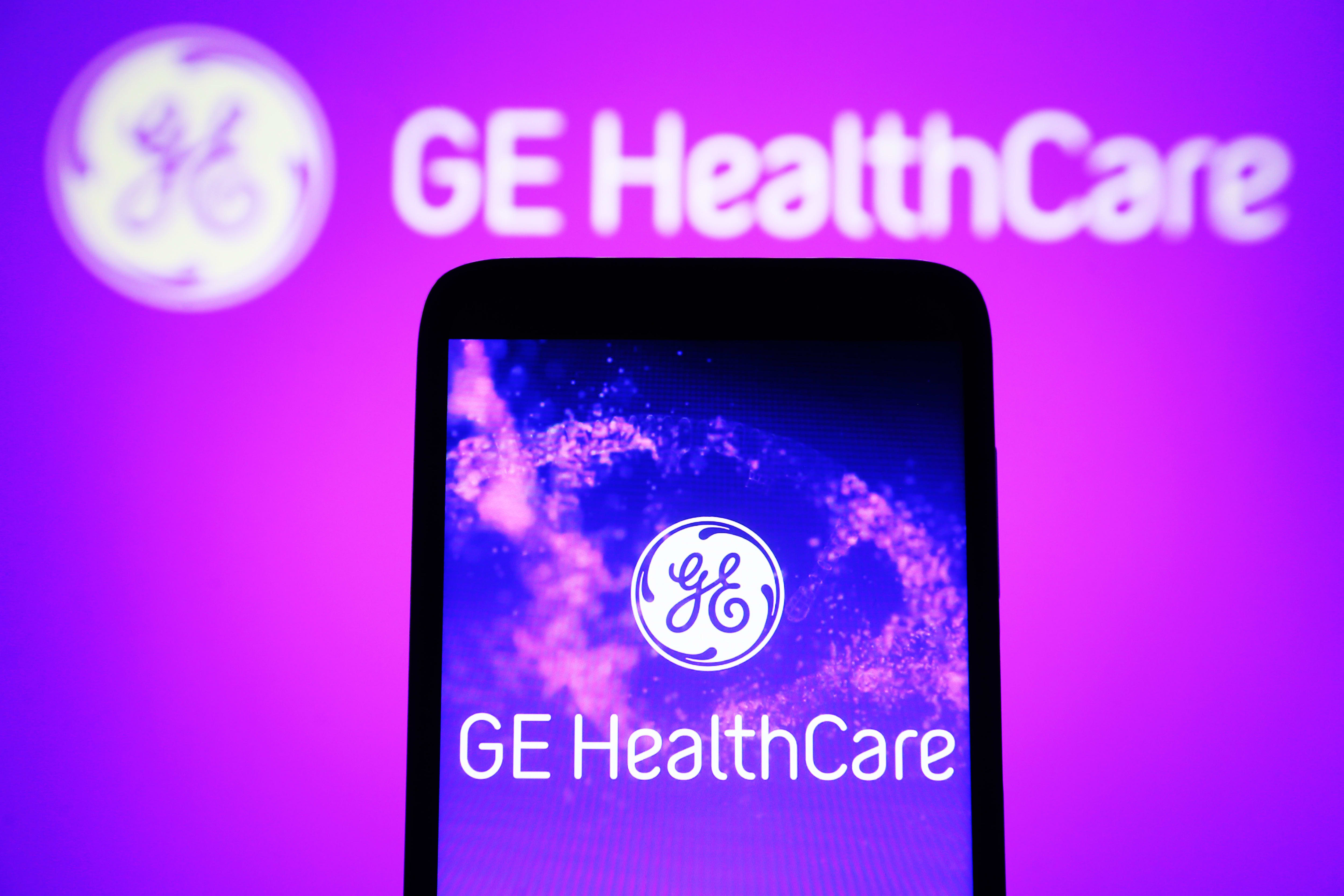
GE Healthcare on Wednesday morning reported a mixed second quarter and shares initially moved sharply lower. The stock then reversed higher as the post-earnings call got underway. Management made it clear that they think that weakness in China is temporary and see many other levers available to grow earnings. Revenue advanced less than 1% year over year to $4.84 billion, missing expectations of $4.87 billion, according to analyst estimates compiled by LSEG. Organic revenue growth was 1%. Adjusted earnings rose 8.7% to $1.00 per share, beating estimates by 2 cents. GE Healthcare Why we own it : GE Healthcare is the global leader in medical imaging, diagnostics, and digital solutions in health care. Its split from General Electric in 2023 enabled the now-standalone company to invest more aggressively in R & D, leading to new product innovations, especially in artificial intelligence. The combination of new, higher-priced products along with the optimization of its business post-split creates an underappreciated margin expansion story. The rollout of new Alzheimer’s disease therapies is another longer-term tailwind. Competitors : Philips and Siemens Most recent buy : Nov. 1, 2023 Initiated : May, 17, 2023 Bottom Line It was not the best showing from Club holding GE Healthcare. China was a key source of weakness in the quarter, and the primary factor forcing management to downwardly revise its full-year organic growth outlook. Sorry to say, we were not surprised. We trimmed our GEHC position Tuesday after rival Philips reported their results and called out weakness in China. Economic stimulus from the Chinese government is expected to help boost business. But the companies have been slow in getting information about the package and have delayed orders. It’s early yet, but the team is hopeful about the growth potential in an amyloid agent used in imaging Alzheimer’s patients now that approval of Club name Eli Lilly ‘s Kisunla treatment joined Leqembi from Eisai and Biogen in the battle against the mind-robbing disease. In the meantime, GE Healthcare management continues to execute at a high level on what they can control, and they’re finding more ways to improve efficiency and, in turn, profitability. That’s why GEHC was able to flip from being down roughly 9% on the release to positive by the time the call wrapped up. Shares were up nearly 4% in afternoon trading. We’re reiterating our “wait for a pullback” 2 rating and our $92-per-share price target. GEHC YTD mountain GE Healthcare YTD Quarterly commentary Organic order growth was up 3%. Investors tend to focus on orders because they’re indicative of customer demand. On the call, management said China was a 3-percentage point headwind to growth, meaning global revenue, excluding the world’s second-largest economy, was up 4% and orders were up 6%. Despite the weakness in China, we got healthy earnings before interest and taxes (EBIT) margin expansion to a level above what the Street was looking for. That helped GEHC pump out an earnings beat despite the top-line miss. On the call, the team noted that the expansion was driven by gross margin improvement thanks to better productivity and price dynamics. We think the company’s ability to expand margins is one of the more underappreciated aspects of the GEHC investment thesis on Wall Street. Another measure of future demand is the backlog, which exited the second quarter at $19 billion, up from the $18.7 billion at the end of Q1. The company’s book-to-bill ratio, which is a measure of orders received relative to sales, was 1.06, up from 1.03 in the first quarter and up from 1.04 in the second quarter of 2023. Anything above a ratio of 1 is a positive sign of future growth. It means more orders are coming in than revenue recorded. In GE Healthcare’s Imaging segment — home to products such as MRI and CT machines — revenue was down nearly 1% compared to the year-ago period. (It was flat organically.) Imaging EBIT margin improved 40 basis points to 11%, through productivity and price improvements. Sequentially, the margin expanded 130 basis points due to higher volumes. Management said, “New product introductions are contributing to particular strength in U.S. product demand.” Ultrasound segment revenue dropped nearly 2%. It was down 1% organically. Ultrasound EBIT margin contracted 120 basis points to 21.6%, with management calling out China as the primary source of weakness. Patient Care Solutions (PCS) sales increased fractionally. (They grew 1% organically.) The segment covers a range of medical devices like electrocardiogram machines and consumables used to take blood pressure readings, among others. EBIT margin for PCS contracted 90 basis points to 10.1%. The company blamed the product mix. But productivity actions offset inflation. Pharmaceutical Diagnostics (PDx) — used in radiology and nuclear medicine to deliver more precise diagnoses — was particularly strong. Segment revenue grew 12.5%. (It grew 14% organically). EBIT margin for PDx improved 450 basis points to 31.2% on the back of improved sales volume, productivity, and pricing. On the call, CFO Jay Saccaro said, “We’re encouraged by positive developments in the molecular imaging market. We saw a continued acceleration of Vizamyl doses delivered in the U.S. in the second quarter. These sales increased threefold.” Vizamyl is an amyloid imaging agent indicated for PET imaging of the brain that estimates the plaque density in adult patients with Alzheimer’s. Arduini added, “Vizamyl doses continued to grow in the second quarter in the U.S. With the recent FDA approval of donanemab, we anticipate even further uptake of our diagnostic amyloid PET agent. This is still a small contributor to sales growth but gives us optimism about its sales potential over the next few years.” Guidance GEHC updated its outlook for the remainder of the year, now predicting organic revenue growth of 1% to 2%, down from the “approximately 4%” forecast previously provided, and below the 3.4% the Street was looking for. On the call, management blamed the prolonged weakness in China, with CEO Peter Arduini saying the company “previously communicated that the region would experience negative sales growth in the first half as we faced a challenging compare.” He continued, “At the time, we expected positive sales growth in the second half. Today, the prolonged timing of the rollout of the new [Chinese] stimulus announced earlier this year is impacting timing of orders and sales. We expect a continued sales decline in China year-over-year in the second half. And we anticipate growth in China will be negative for the year. As a result, we’re lowering our total company full-year organic revenue growth guidance.” The adjusted EBIT margin outlook was nudged higher to a range of 15.7% to 16% and above the 15.6% the Street was looking for, even on the low end. The team cited further progress being made on “productivity and optimization initiatives.” Management reaffirmed their outlook for the company’s adjusted effective tax rate of 23% to 25%, earnings per share of $4.20 to $4.35, and free cash flow of roughly $1.8 billion. For the third quarter, the team expects organic revenue growth of about 1% and adjusted EBIT margin expansion “relatively similar” to the 57-basis-point growth in Q2. The Street has been modeling about 50 basis points of expansion. The team added that they “would expect year-over-year organic revenue growth and adjusted EBIT margin in the fourth quarter to be the highest of the year.” (Jim Cramer’s Charitable Trust is long GEHC, LLY. See here for a full list of the stocks.) As a subscriber to the CNBC Investing Club with Jim Cramer, you will receive a trade alert before Jim makes a trade. Jim waits 45 minutes after sending a trade alert before buying or selling a stock in his charitable trust’s portfolio. If Jim has talked about a stock on CNBC TV, he waits 72 hours after issuing the trade alert before executing the trade. THE ABOVE INVESTING CLUB INFORMATION IS SUBJECT TO OUR TERMS AND CONDITIONS AND PRIVACY POLICY , TOGETHER WITH OUR DISCLAIMER . NO FIDUCIARY OBLIGATION OR DUTY EXISTS, OR IS CREATED, BY VIRTUE OF YOUR RECEIPT OF ANY INFORMATION PROVIDED IN CONNECTION WITH THE INVESTING CLUB. NO SPECIFIC OUTCOME OR PROFIT IS GUARANTEED.
Pavlo Gonchar | Lightrocket | Getty Images
GE Healthcare on Wednesday morning reported a mixed second quarter and shares initially moved sharply lower. The stock then reversed higher as the post-earnings call got underway.
This article was originally published on CNBC

